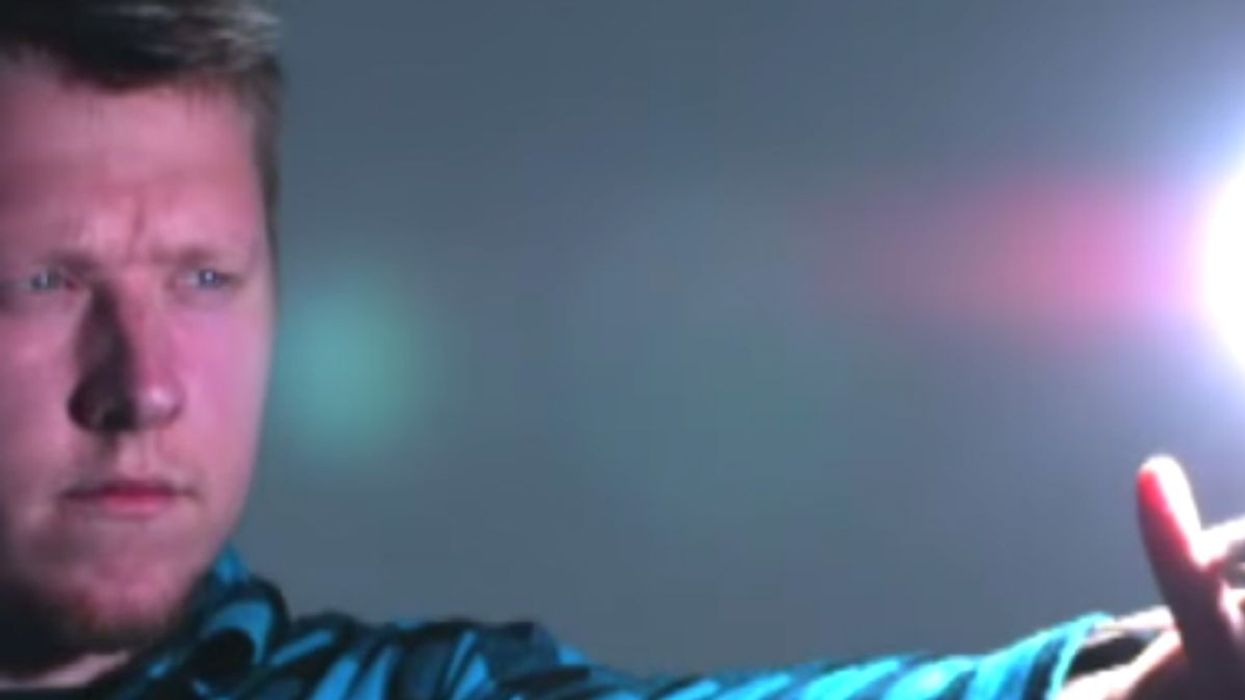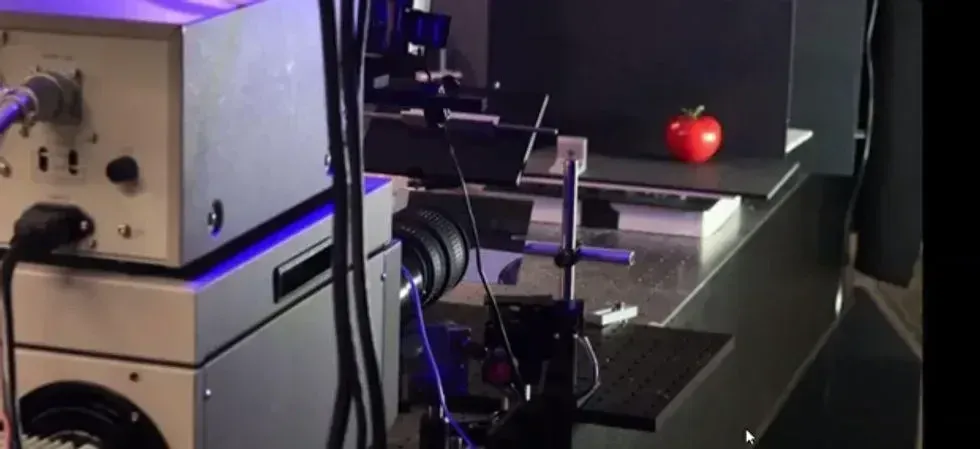In the 1960s, Robert Kirkland Schwitzgebel and his twin brother Ralph were psychology students at Harvard, interested in helping troubled, at-risk youth—“juvenile delinquents,” in the jargon of the era. Students of behaviorist and social philosopher B.F. Skinner, the brothers envisioned using modern tools to expand upon Skinner’s positive-reinforcement theories. To that end, Ralph and his colleague William Hurd dreamed up Patent No. 3,478,344: Behavioral Supervision System With Wrist Carried Transceiver. They even made prototypes with surplus missile-tracking equipment.
At the time, the idea of using wearable technology to curb antisocial behavior seemed like something out of science fiction. Half a century later, electronic monitoring is an established criminal justice tool in more than 30 countries. In the United States alone, an estimated 200,000 people—“offenders” is the accepted parlance, encompassing parolees, individuals under house arrest, and other scenarios—are wearing some form of ankle monitor right now. But this is hardly the world envisioned by the brothers, who later shortened their name to Gable.
“It’s all perverted,” says Robert Gable, 81, an emeritus professor of psychology at Claremont Graduate University. “It’s become a more efficient way to do the same bad thing—punishment.” Gable says this without bitterness; it’s just that he and his brother, who died earlier this year, always had more optimistic goals.
“They were promoting rehabilitation,” says Mike Nellis, editor of the Journal of Offender Monitoring and emeritus professor of law at the University of Strathclyde in Glasgow, “at the very moment when America was turning away from rehabilitation, towards punishment.”
It’s still possible that the ankle monitor could play a productive role as a tool of rehabilitation—even Gable thinks so. After all, in the age of the Fitbit and the “Quantified Self” when we routinely mine ourselves for personal and even biological data with an eye toward personal improvement, tech-driven behavior change hardly sounds radical. But that would require a rethinking of both the technology and the systems that use it.
[quote position="full" is_quote="true"]They were promoting rehabilitation at the very moment when America was turning away from rehabilitation, towards punishment.[/quote]
In its first real-world deployment as a criminal justice tool, the ankle monitor—sometimes referred to as a “tag”— served as a high-tech alternative to house arrest. And it was inspired less by the Gables’ cognitive-behavioral research than by a Spider-Man comic. In the late 1970s, concerned about overcrowded prisons mixing minor offenders with hardened criminals, and facing the challenges of keeping tabs on potentially dangerous parolees, a New Mexico judge named Jack Love kept a file folder collecting potential technological solutions, articles about electronically-tracked cattle and the like. Among them: A 1977 syndicated comic in which a villain named Kingpin slapped an irremovable bracelet onto the web-slinger’s wrist and announced it was a “radar device—which will allow me to zero in on your location whenever I wish!”
Seeking to convince electronics makers to create something similar, Love eventually found Michael T. Goss, a Honeywell salesman who had the technical chops and entrepreneurial gumption to bring the first electronic-monitoring device to market. Goss raised $100,000 to found National Incarceration Monitor and Control Services, Inc. Its product was called GOSSLink—a four-ounce, waterproof ankle bracelet with a cigarette-pack-sized transmitter that communicated its presence via radio frequency to a nearby central unit.
Here was a new form of house arrest management, an electronic tether: If an offender left the area of the base unit, a distant monitor would be notified, and authorities could be dispatched. Judge Love wore the ankle bracelet for his own personal tests; satisfied with its fit and functionality, he ordered it used to enforce court-ordered curfews on a small number of low-risk offenders in 1982. While this apparently worked, skeptical New Mexico authorities ended the experiment quickly, concerned that its legality hadn’t been adequately established in the courts.
But the New Mexico experiment attracted other inventors, notably a Florida startup called Controlled Activities Corporation (CONTRAC), which devised a transmitter in a small, half-cylinder form that could be strapped to the wrist or ankle. Other companies formed to make similar devices, and electronic monitoring (EM) slowly caught on. A few experimented with wrist devices, and at least one neck-worn variation, but the ankle won out as the preferred position: That location made it both more difficult to slip off, and perhaps, says Nellis, less brazenly conspicuous. By 1990, the Journal of Offender Monitoring estimated that monitoring devices were being used on about 12,000 people, mostly in the United States, as other nations had only begun to consider and experiment with ankle monitors at the time. It served as an incarceration alternative, preferable to being locked in a cell for the individual, and cheaper for the state.
[quote position="full" is_quote="false"]The ankle monitor…was inspired less by the Gables’ cognitive-behavioral research than by a Spider-Man comic.[/quote]
Wearable technology has undergone a complete revolution in the last 25 years. Not just its capabilities, but in our attitudes. We proudly wear devices that track our footsteps and measure our heartbeats; we use others to reveal, or announce, our whereabouts. By comparison, it’s striking how slowly EM, and its basic design parameters, has evolved. “There are three fundamental things you’ve got to worry about, back then and today,” says Jock Waldo, vice president of strategic marketing for BI, Inc. Previously in the dairy cattle-tracking business, BI acquired both Goss’ startup and CONTRAC, and is one of the biggest players in the EM business today.
The first challenge, according to Waldo (and others I spoke to), is making the object difficult to tamper with. Since bracelets can usually be easily cut away, most include a fiber optic thread within the strap to send a tamper alert if severed. The second challenge is battery life: Needing to recharge the bracelet frequently may hamper an offender’s ability to find work, and false alarms from dead batteries consume law enforcement resources. Finally, size: The bracelets must be small and light enough to make wearing them practical. In certain markets, particularly in Europe, there’s also an effort to make the devices easier to conceal, so that they’re less stigmatizing.
The most significant breakthrough has been the widespread adoption of GPS capabilities, especially in the United States. And while the U.S. remains the largest market for ankle monitors in general, the technology went international in the late 1980s and early 1990s, first in England, Canada, and Australia, and then gradually across Europe and elsewhere.
What change has occurred seems designed more for the monitoring authority than the wearer. Some models made by BI and other firms now allow agencies to send voice messages telling an offender to, for instance, check in with a parole officer—potentially awkward, at a minimum, in a workplace setting. Other models communicate with a vibration. Nevertheless, most of today’s monitors look, feel, and function much as they always have.
In all fairness to manufacturers, that is fundamentally a demand issue. In contrast to a consumer category like smartphones or fitness trackers, an ankle monitor’s end user is not the customer. So while there has been an evolution toward plastics that don’t irritate an offender’s skin, for example, it’s no surprise that a manufacturer like Omnilink is more focused on touting its success at reducing false alarms. Companies that design and sell this technology respond to a specific and unusual market—criminal justice systems. “Our job,” says Charles Pearson, vice president of operations at Omnilink, now a division of Numerex, “is to provide what they want.”
Criminal justice, of course, is not widely known as a hotbed of innovation or cutting edge design. Still, the possibility of monitoring subjects in the community through GPS has raised a number of intriguing potential scenarios.
“I believe electronic monitoring can be a very positive, pro-social thing,” says Linda Connelly, the president and founder of Leaders in Community Alternatives, Inc. (LCA), a private, California-based criminal justice organization focused on community-based alternatives to incarceration. Connelly’s interest runs deep: A psychology major in college, she worked with the public defender’s office and as a corrections officer, always with an eye toward helping people change their behavior. She saw potential in ankle monitors when she first encountered the devices in the 1980s, and still does.
What she hasn’t seen is much genuine progress. “It’s been highly frustrating to watch,” she says. Some corrections officials still think EM-supported alternatives like Connelly envisions are too “sci-fi,” she explains, and will end up being used on people who would never have been under custody otherwise. (“That’s never happened,” Connelly insists.) Others feel “it’s not really punishment, because somebody’s not in jail,” while elected judges worry about monitored offenders committing crimes. (That does happen, but there is no definitive data to quantify how frequently.) “You get it from every side,” Connelly says.
Nevertheless, she views ankle monitors as a logical element of the agency’s services, which keep offenders in the community, and incorporate behavioral programs to help enforce positive changes like holding down a job, attending therapy sessions, going home to their family at night. “That’s huge,” she says.
LCA also uses ankle bracelets that make use of the second significant innovation in recent monitoring technology history: Transdermal alcohol testing. A company called SCRAM Systems (the name refers to “secure alcohol monitoring”), founded in 1997, makes a variety of bracelets that measure alcohol intake through the skin. Some include radio frequency or GPS capabilities; they’re often used on drunk-driving offenders or others whose rehabilitation entails breaking a cycle of addiction.
For an internal study, LCA tracked 163 subjects who went through its SCRAM-using programs in 2009, and found that, five years later, 86 percent had no new DUIs. Connelly acknowledges that this is not enough evidence to persuade the broader public, and has been “begging researchers for years” to take a hard, empirical look at monitoring approaches.
SCRAM’s around the clock monitors make a mild buzzing sound when checking for alcohol intake, every half hour, and Connelly says that some clients have told her that this can function as a tangible reminder of the damage alcohol has caused them in the past—and the fact that they’re staying sober. By the end of the program, “They’ve proven to themselves they can be home around those stressors, and not drink, and be successful.”
[quote position="full" is_quote="true"]I believe electronic monitoring can be a very positive, pro-social thing.[/quote]
“The first thing everyone says is: ‘It’s better than being in prison,’” says James Kilgore, a research scholar at the University of Illinois at Urbana-Champaign’s Center for African Studies. “For me, that’s become the wrong comparison.”
Kilgore brings a perspective to the discussion of EM that is rarely heard. His research is focused on the people who have worn ankle monitors, including Kilgore himself: His was a condition of parole, following the 2009 conclusion of a six-year prison sentence for his involvement in crimes committed in the 1970s, including a bank robbery. On his blog, Voice of the Monitored, Kilgore has touched on his own experience, but generally strives to “monitor the monitoring programs.”
In practice, he argues, monitoring frequently doesn’t help offenders or parolees reintegrate. An ankle monitor can’t understand that the boss needs you to work late; it just knows you aren’t where you’re supposed to be. If a dying battery means you have to stay home for two hours instead of going to a job interview, that’s how it is. If a neighbor needs help or—as once happened to Kilgore while he was wearing an ankle monitor—your mother calls with an emergency, you can take the chance that your parole officer will understand, or stick to your geographically-monitored regimen. “The technology is a force of control in their daily lives,” he continues. Moreover, it can be seriously disruptive to others living with someone under house arrest. Some offenders find it so frustrating that they tell him they’d rather just do their time. Kilgore believes that as it is currently used, EM should be openly recognized as a form of punishment.
Like Connelly, Kilgore points out that there’s surprisingly little research or detailed legal examination on the efficacy and effects—positive or negative—of electronic monitoring. He questions the wisdom of so much EM development being left to the private sector, and the widespread practice of requiring offenders to pay for their own monitoring regimes. All of this, he suggests, is a function of how criminal justice has been conceived for decades: “How did we end up with 2.2 million people in prisons and jails? It was a political project that dovetailed with economic interests, which ultimately dovetailed with interests of researchers.”
Now Kilgore wonders about future implications of scenarios that use GPS technology to enforce “exclusion zones”—like keeping sex offenders out of public parks, or former gang members out of certain neighborhoods. This extends the notion of control, but does it advance rehabilitation?
“The only way you’re going to be rehabilitated by being on an electronic monitor,” he argues, “is if you have access to the things you need to rehabilitate—employment, housing, connections to the community.”
Last year, Kilgore spoke at an electronic monitoring conference in Europe, and came away impressed by a different set of attitudes and goals around criminal justice, and the way technology can be used to meet those objectives. To begin with, probation officers he met “self identified as social workers,” not as an element of law enforcement.
Mike Nellis, who is based in Scotland, agrees that justice system attitudes vary around the world, and many European countries have shaped EM policies with a far greater emphasis on rehabilitation. Not surprisingly, some of the most forward-thinking EM companies are also European. A British company, Buddi, was founded in 2005 with an eye toward bringing GPS location technology to the health and safety market. Its devices for vulnerable individuals or Alzheimer’s and dementia sufferers look as friendly as the firm’s name: colorful, removable wristbands tracked by a 24-hour service, with a button to call for help. In short, they are designed to be something you might want to wear.
About six years ago, a medium-security hospital for potentially dangerous psychiatric patients in South London asked for a “secure” version of its bracelet, says Louise Gartland, Buddi’s business development manager. This led the company into the “offender market,” with a featureless black ankle monitor fitted with a Kevlar strap and no buckle, currently used by various agencies in the UK and other countries. “It’s a different route,” she says, “but the same technology.” Its product is also used in Sweden as part of a rehabilitation-focused program with juvenile offenders, and New Zealand, for sex offenders who are monitored around the clock, with multiple exclusion zones.
Recently, a design-forward sensibility has infiltrated the EM market in the shape of a company called Geosatis, started in 2010 by a technology consultant who took on a project for the Swiss prison system. Officials at the company, the story goes, wondered why EM devices resembled clunky, user-indifferent Cold War relics.
The Geosatis response is certainly the most distinct-looking ankle monitor on the market: a circular form made of various tough plastics that clips and unlocks with an electronic key. With a sock-like “comfort element,” the device is unobtrusive enough that a user might forget it’s there, says Reshad Moussa, the company’s chief business development officer.
But even this design evolution means to serve monitoring agencies. More surface area enables more sensors, and the accompanying software can show whether an offender is standing or reclining, running or swimming. “It’s a pure technology product,” says Moussa. “The Fitbit of offenders.”
In describing the sophistication of its backend software, Geosatis echoes what Buddi and U.S. monitoring firms told me: That’s where the innovations and advances are happening. In a sense, this echoes the broader market of consumer-focused wearables, whose attraction is often in the data they can collect, organize, and present.
Buddi has “a full intelligence system,” Gartland says, designed to help in “predicting behavior.” Actual demand for this level of data varies; some agencies don’t want to be overwhelmed, and have concerns about the privacy implications. But coming up with increasingly elaborate data systems fed by these objects is clearly a priority for manufacturers. “That’s the future,” Moussa told me. “We want to get more and more information about the offender, his behavior, his movement, his sleeping patterns.”
Indeed, the bleeding edge vision of possible ankle monitor futures entails its “wearable” iteration disappearing altogether—replacing the monitor with “implanted communication devices.” This may be farfetched, but radio frequency identification chips in pets are now commonplace. And the Gables’ ideas used to sound like science fiction, too.
[quote position="full" is_quote="true"]That’s the future,” Moussa told me. “We want to get more and more information about the offender, his behavior, his movement, his sleeping patterns.[/quote]
Meanwhile, there have been a few hints of enhancing the visual form of the ankle monitor—by people wearing one. In 2012, some viewers of the British reality show “Big Fat Gypsy Weddings” were scandalized when one of it subjects “blinged up her ankle tag,” the Daily Mail reported at the time, with “glued blue diamanté gems.” More recently, a young British woman ordered to wear a tag after a public order conviction was inspired to do the same thing with fake diamonds—and was subsequently fined.
If nothing else, maybe such incidents, however silly, hint at the possibility that this variety of involuntary wearable is in wide enough use that it shouldn’t remain hidden from public discussion.
Moreover, a more practical evolution of these objects, their underlying technology, and their uses really should be driven by a combination of researched data about their effectiveness and limitations, and a broader conversation about the goals of the justice system. Nellis, who has studied electronic monitoring for decades, points out how broader tech culture has changed in ways that may influence that conversation. The generation that was initially skeptical of monitoring “were kind of middle-age guys who’d only really had computers on their desks for about five years,” he says. “The younger generation who are making decisions now, grew up with technology.” Given the pervasiveness of, say, trackable mobile phone data, monitoring offenders doesn’t seem particularly extraordinary to them.
“I’m very clear in my mind that there are bad uses of it,” Nellis says of electronic monitoring systems today. “But I’m equally clear in my mind that there are good uses of it as well. It should be talked about more.”
















 TikTok · Bring Back Doors
TikTok · Bring Back Doors 



 Label for Middle Earth Organics' Organic Tomato & Porcini Mushroom Sauce
Label for Middle Earth Organics' Organic Tomato & Porcini Mushroom Sauce "Judith Beheading Holofernes" by Caravaggio (1599)
"Judith Beheading Holofernes" by Caravaggio (1599)